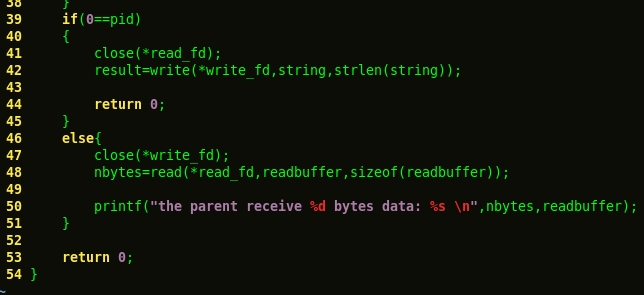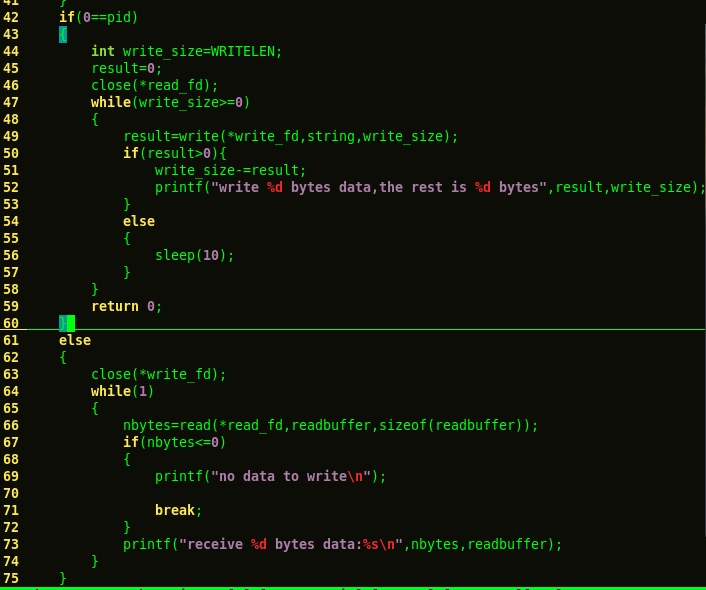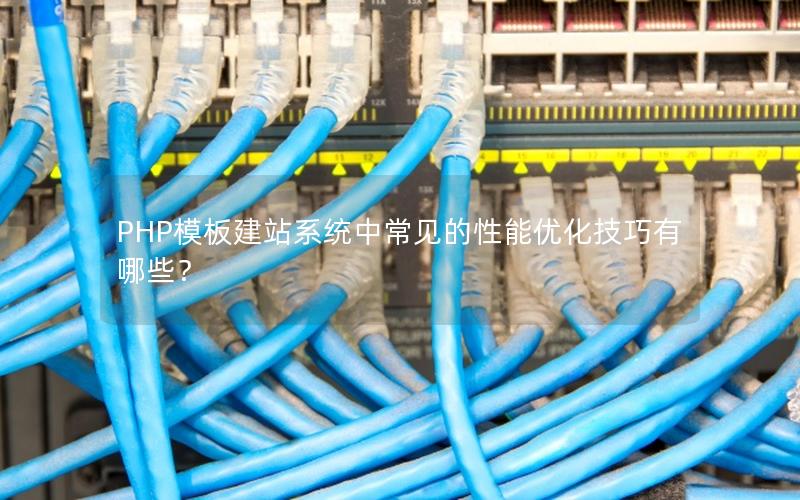管道是一种把两个进程之间的标准输入和标准输出连接起来的机制,从而提供一种让多个进程间通信的方法,当进程创建管道时,每次都需要提供两个文件描述符来操作管道。其中一个对管道进行写操作,另一个对管道进行读操作。对管道的读写与一般的io系统函数一致,使用write()函数写入数据,使用read()读出数据。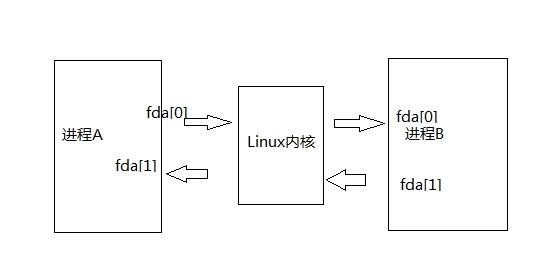
|
1
2
3 |
#include<unistd.h>
|
返回值:成功,返回0,否则返回-1。参数数组包含pipe使用的两个文件的描述符。fd[0]:读管道,fd[1]:写管道。
必须在fork()中调用pipe(),否则子进程不会继承文件描述符。两个进程不共享祖先进程,就不能使用pipe。但是可以使用命名管道。
当管道进行写入操作的时候,如果写入的数据小于128k则是非原子的,如果大于128k字节,缓冲区的数据将被连续地写入管道,直到全部数据写完为止,如果没有进程读取数据,则将一直阻塞,如下: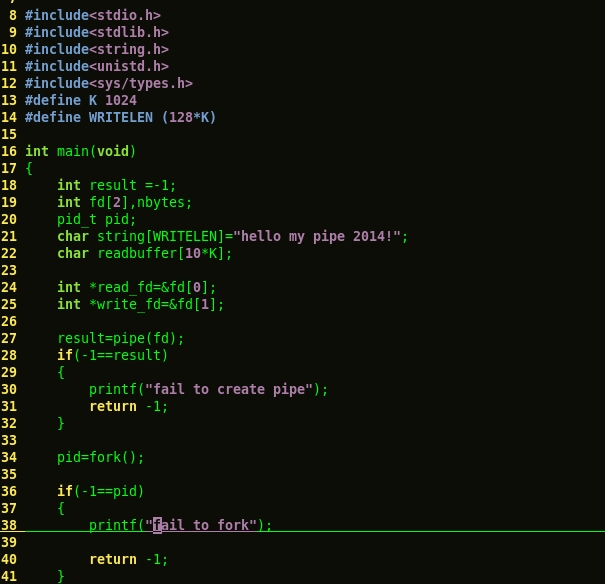
在上例程序中,子进程一次性写入128k数据,当父进程将全部数据读取完毕的时候,子进程的write()函数才结束阻塞并且
返回写入信息。
命名管道fifo
管道最大的劣势就是没有名字,只能用于有一个共同祖先进程的各个进程之间。fifo代表先进先出,单它是一个单向数据流,也就是半双工,和
管道不同的是:每个fifo都有一个路径与之关联,从而允许无亲缘关系的进程访问。
|
1
2
3
4
5 |
#include <sys/types.h>
#include <sys/stat.h>
int mkfifo(const char *pathname, mode_t mode); |
这里pathname是路径名,mode是sys/stat.h里面定义的创建文件的权限.
有亲缘关系进程间的fifo的例子
|
1
2
3
4
5
6
7
8
9
10
11
12
13
14
15
16
17
18
19
20
21
22
23
24
25
26
27
28
29
30
31
32
33
34
35
36
37
38
39
40
41
42
43
44
45
46
47
48
49
50
51
52
53
54
55
56
57
58
59
60
61
62
63
64
65
66
67
68
69 |
/*
* 有亲缘关系的进程间的fifo的使用
* fifo 使用的简单例子
*/
#include "../all.h"
#define fifo_path "/tmp/hover_fifo"
void
do_sig(int signo)
{
if (signo == sigchld)
while (waitpid(-1, null, wnohang) > 0)
;
}
int
main(void)
{
int ret;
int fdr, fdw;
pid_t pid;
char words[10] = "123456789";
char buf[10] = {'\\0'};
// 创建它,若存在则不算是错误,
// 若想修改其属性需要先打开得到fd,然后用fcntl来获取属性,然后设置属性.
if (((ret = mkfifo(fifo_path, file_mode)) == -1)
&& (errno != eexist))
perr_exit("mkfifo()");
fprintf(stderr, "fifo : %s created successfully!\\n", fifo_path);
signal(sigchld, do_sig);
pid = fork();
if (pid == 0) { // child
if ((fdr = open(fifo_path, o_wronly)) < 0) // 打开fifo用来写
perr_exit("open()");
sleep(2);
// 写入数据
if (write(fdr, words, sizeof(words)) != sizeof(words))
perr_exit("write");
fprintf(stderr, "child write : %s\\n", words);
close(fdw);
} else if (pid > 0) { // parent
if ((fdr = open(fifo_path, o_rdonly)) < 0) // 打开fifo用来读
perr_exit("open()");
fprintf(stderr, "i father read, waiting for child ...\\n");
if (read(fdr, buf, 9) != 9) //读数据
perr_exit("read");
fprintf(stderr, "father get buf : %s\\n", buf);
close(fdr);
}
// 到这里fifo管道并没有被删除,必须手动调用函数unlink或remove删除.
return 0;
} |
从例子上可以看出使用fifo时需要注意:
*fifo管道是先调用mkfifo创建,然后再用open打开得到fd来使用.
*在打开fifo时要注意,它是半双工的的,一般不能使用o_rdwr打开,而只能用只读或只写打开.
fifo可以用在非亲缘关系的进程间,而它的真正用途是在服务器和客户端之间. 由于它是半双工的所以,如果要进行客户端和服务器双方的通信的话,
每个方向都必须建立两个管道,一个用于读,一个用于写.
下面是一个服务器,对多个客户端的fifo的例子:
server 端的例子:
|
1
2
3
4
5
6
7
8
9
10
11
12
13
14
15
16
17
18
19
20
21
22
23
24
25
26
27
28
29
30
31
32
33
34
35
36
37
38
39
40
41
42
43
44
45
46
47
48
49
50
51
52
53
54
55
56
57
58
59
60
61
62
63
64
65
66
67
68
69
70
71
72
73
74
75 |
/*
* fifo server
*/
#include "all.h"
int
main(void)
{
int fdw, fdw2;
int fdr;
char clt_path[path_len] = {'\\0'};
char buf[max_line] = {'\\0'};
char *p;
int n;
if (mkfifo(fifo_svr, file_mode) == -1 && errno != eexist)
perr_exit("mkfifo()");
if ((fdr = open(fifo_svr, o_rdonly)) < 0)
perr_exit("open()");
/*
* 根据fifo的创建规则, 若从一个空管道或fifo读,
* 而在读之前管道或fifo有打开来写的操作, 那么读操作将会阻塞
* 直到管道或fifo不打开来读, 或管道或fifo中有数据为止.
*
* 这里,我们的fifo本来是打开用来读的,但是为了,read不返回0,
* 让每次client端读完都阻塞在fifo上,我们又打开一次来读.
* 见unpv2 charper 4.7
*/
if ((fdw2 = open(fifo_svr, o_wronly)) < 0)
fprintf(stderr, "open()");
while (1) {
/* read client fifo path from fifo_svr */
/* 这里由于fifo_svr有打开来写的操作,所以当管道没有数据时,
* read会阻塞,而不是返回0.
*/
if (read(fdr, clt_path, path_len) < 0) {
fprintf(stderr, "read fifo client path error : %s\\n", strerror(errno));
break;
}
if ((p = strstr(clt_path, "\\r\\n")) == null) {
fprintf(stderr, "clt_path error: %s\\n", clt_path);
break;
}
*p = '\\0';
dbg("clt_path", clt_path);
if (access(clt_path, w_ok) == -1) { // client fifo ok, but no permission
perror("access()");
continue;
}
/* open client fifo for write */
if ((fdw = open(clt_path, o_wronly)) < 0) {
perror("open()");
continue;
}
if ((n = read(fdr, buf, words_len)) > 0) { /* read server words is ok */
printf("server read words : %s\\n", buf);
buf[n] = '\\0';
write(fdw, buf, strlen(buf));
}
}
close(fdw);
unlink(fifo_svr);
exit(0);
} |
客户端的例子:
|
1
2
3
4
5
6
7
8
9
10
11
12
13
14
15
16
17
18
19
20
21
22
23
24
25
26
27
28
29
30
31
32
33
34
35
36
37
38
39
40
41
42
43
44
45
46 |
/*
* fifo client
*
*/
#include "all.h"
int
main(void)
{
int fdr, fdw;
pid_t pid;
char clt_path[path_len] = {'\\0'};
char buf[max_line] = {'\\0'};
char buf_path[max_line] = {'\\0'};
snprintf(clt_path, path_len, fifo_clt_fmt, (long)getpid());
dbg("clt_path1 = ", clt_path);
snprintf(buf_path, path_len, "%s\\r\\n", clt_path);
if (mkfifo(clt_path, file_mode) == -1 && errno != eexist)
perr_exit("mkfifo()");
/* client open clt_path for read
* open server for write
*/
if ((fdw = open(fifo_svr, o_wronly)) < 0)
perr_exit("open()");
/* write my fifo path to server */
if (write(fdw, buf_path, path_len) != path_len)
perr_exit("write()");
if (write(fdw, words, words_len) < 0) /* write words to fifo server */
perr_exit("error");
if ((fdr = open(clt_path, o_rdonly)) < 0)
perr_exit("open()");
if (read(fdr, buf, words_len) > 0) { /* read reply from fifo server */
buf[words_len] = '\\0';
printf("server said : %s\\n", buf);
}
close(fdr);
unlink(clt_path);
exit(0);
} |
以上就是本文的全部内容,希望对大家的学习有所帮助,也希望大家多多支持快网idc。
原文链接:http://www.cnblogs.com/kunhu/p/3608109.html
相关文章
- ASP.NET本地开发时常见的配置错误及解决方法? 2025-06-10
- ASP.NET自助建站系统的数据库备份与恢复操作指南 2025-06-10
- 个人网站服务器域名解析设置指南:从购买到绑定全流程 2025-06-10
- 个人网站搭建:如何挑选具有弹性扩展能力的服务器? 2025-06-10
- 个人服务器网站搭建:如何选择适合自己的建站程序或框架? 2025-06-10
- 2025-07-10 怎样使用阿里云的安全工具进行服务器漏洞扫描和修复?
- 2025-07-10 怎样使用命令行工具优化Linux云服务器的Ping性能?
- 2025-07-10 怎样使用Xshell连接华为云服务器,实现高效远程管理?
- 2025-07-10 怎样利用云服务器D盘搭建稳定、高效的网站托管环境?
- 2025-07-10 怎样使用阿里云的安全组功能来增强服务器防火墙的安全性?
快网idc优惠网
QQ交流群
-
2025-05-27 90
-
2025-06-05 62
-
2025-05-29 33
-
2025-05-25 81
-
2025-05-29 95


